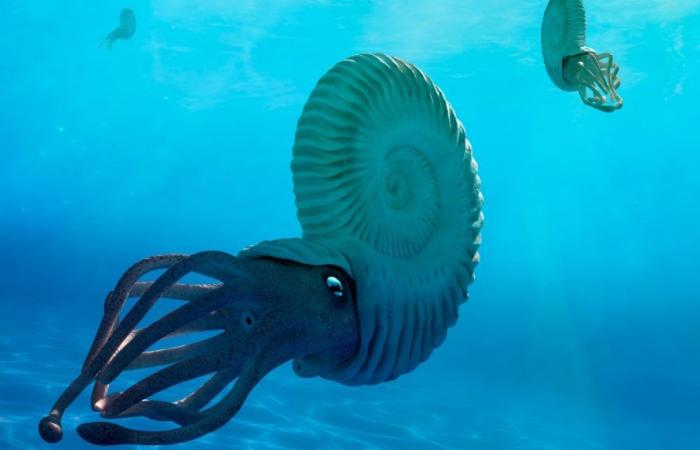Unlike the dinosaurs, which were already heading towards their end before the asteroid, the ammonites still had a story to tell.
Another story of extinction demands to be reconsidered: that of the ammonites. These amazing mollusks proliferated in the Earth’s oceans for more than 350 million yearsbut, like that of the dinosaursits end came quickly due to the impact of the same asteroid that wiped out our favorite prehistoric animals. In this sense, It has been said that ammonites were already in decline before the eventHowever, new research argues that the fate of this marine kingdom was not set in stone, as has been previously claimed.
The new research was published in Nature Communications and was directed by paleontologists from the University of Bristol. In general, the work points out thatAmmonites were not heading towards extinction before the asteroid fell and that the fossil record should not be taken as the only factor to draw conclusions of this type.
“Analyzing the existing fossil record of Late Cretaceous ammonites as if it were the complete, global history is probably the reason previous researchers have thought they were in ecological decline in the long term,” says, in a statement, Dr. Joseph Flannery-Sutherland, lead author of the study.
New data
In order to provide greater clarity to the issue, the researchers of this study gathered a New database of Upper Cretaceous ammonite fossils to help fill in the gaps in their record. So they gathered samples from various museums and obtained a more accurate picture of what the diversity of these animals was like shortly before the impact.
You may be interested in: Even without an asteroid, everything was already set for the extinction of the dinosaurs
Broadly speaking, scientists discovered that The different populations of ammonites were subject to very different conditions, depending on where they were. Therefore, the authors highlight the complexity of this extinction, which must be seen in a panoramic way.
You may be interested in: The oarfish and its relationship with the end of the world
«We cannot necessarily trust the data fossils world and we have to analyze them on a regional scale. “In this way we can capture a much more nuanced picture of how diversity changed in space and over time, which also shows how variation in balance shaped these changes,” the author concludes.
Keep reading:
Horned dinosaur discovered, lived 78 million years ago, named after Norse god
Could our ancestors have coexisted with dinosaurs? Some scientists say yes
Before the reign of the dinosaurs, this species dominated the world
Colossal Biosciences, the company that wants to resurrect extinct animals
About Darwin, cruises and turtles


